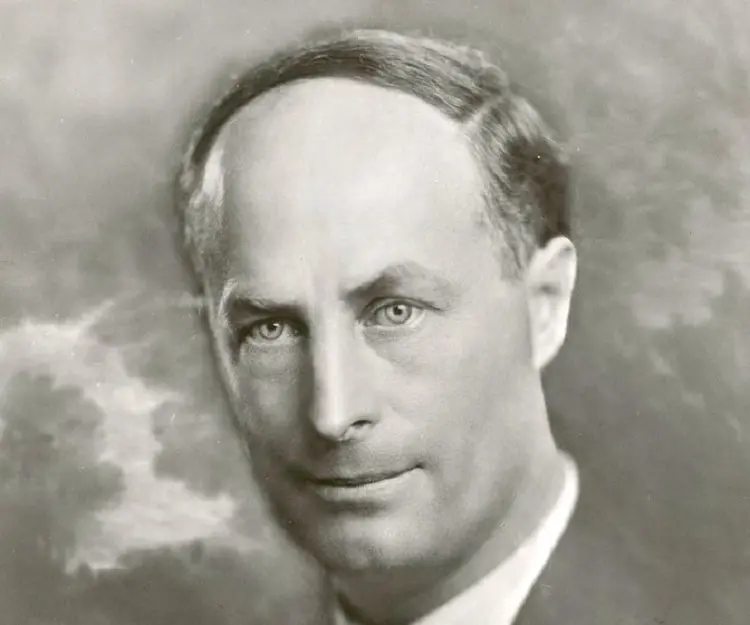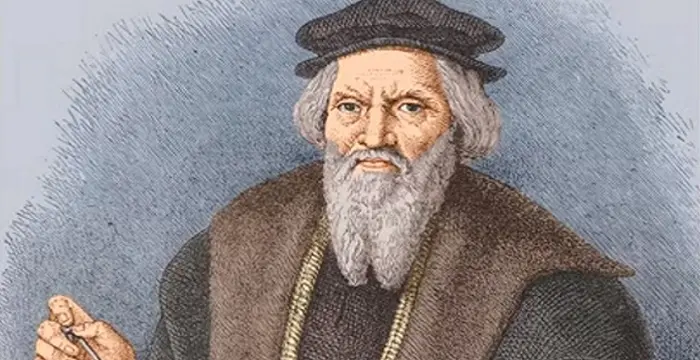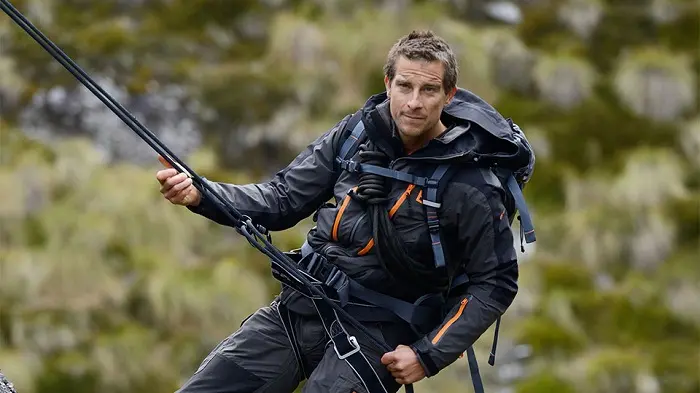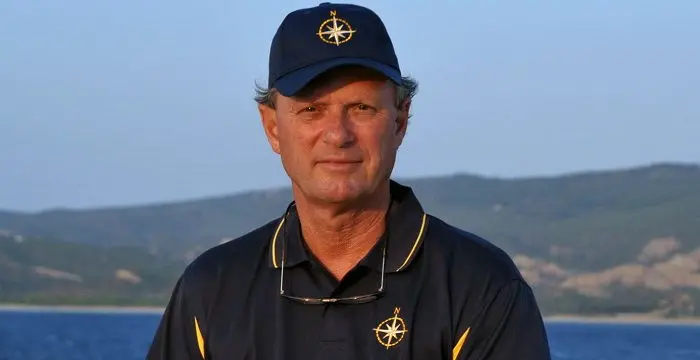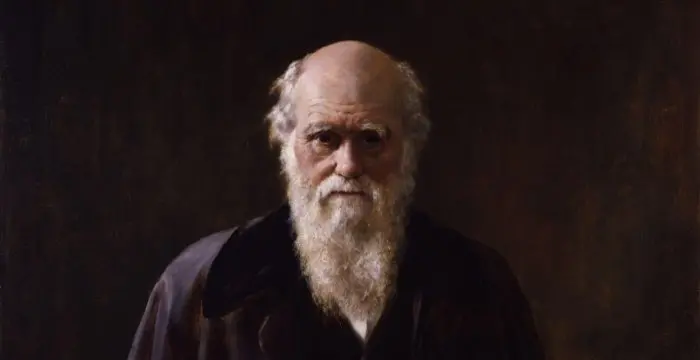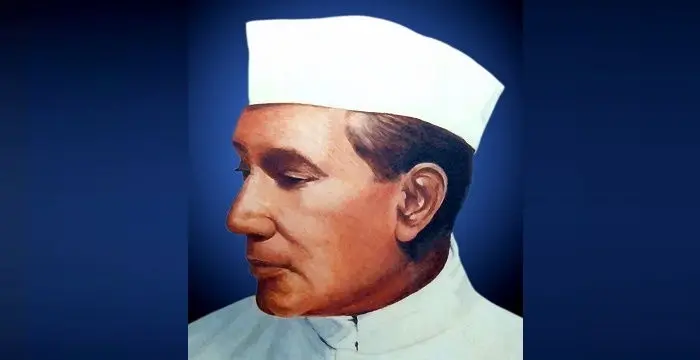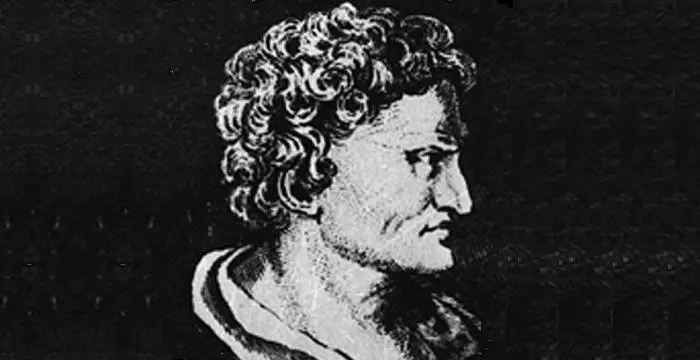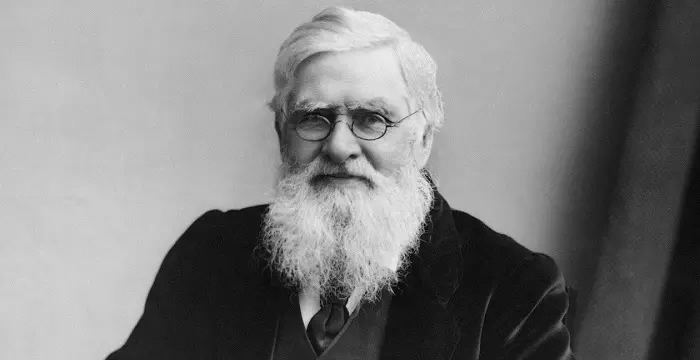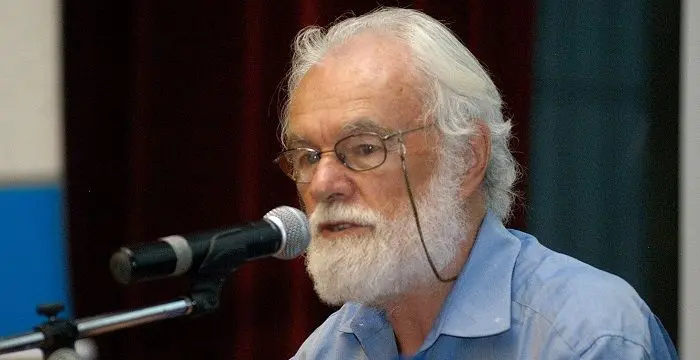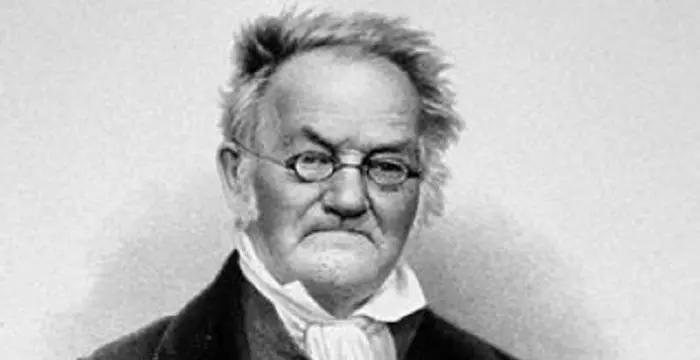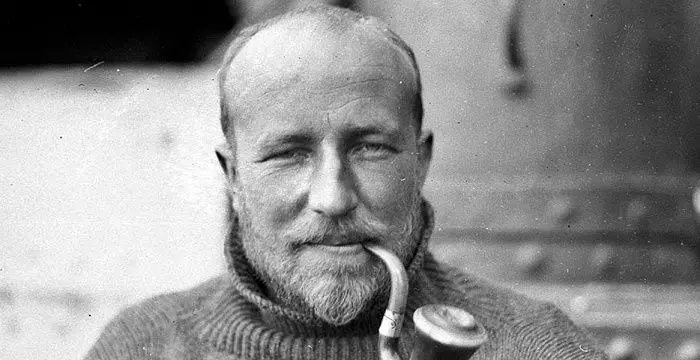
Douglas Mawson - Geographers, Family and Personal Life
Douglas Mawson's Personal Details
Sir Douglas Mawson was an Australian explorer, geologist and academic
| Information | Detail |
|---|---|
| Birthday | May 5, 1882 |
| Died on | October 14, 1958 |
| Nationality | Australian |
| Famous | Intellectuals & Academics, Geographers, Geologists, Explorers |
| Spouses | Paquita Delprat |
| Known as | Sir Douglas Mawson |
| Childrens | Jessica Mawson, Patricia Mawson |
| Universities |
|
| Birth Place | Shipley |
| Gender | Male |
| Sun Sign | Taurus |
| Born in | Shipley |
| Famous as | Explorer, Geologist |
| Died at Age | 76 |
// Famous Intellectuals & Academics
Bertil Gotthard Ohlin
Bertil Gotthard Ohlin was a famous Swedish economist. This biography profiles his childhood, family life & achievements.
Emily Greene Balch
Emily Greene Balch was an American economist, sociologist and pacifist who won the 1946 Nobel Peace Prize. This biography of Emily Greene Balch provides detailed information about her childhood, life, achievements, works & timeline.
Martin Buber
One of the greatest philosophers to have ever walked on earth, Martin Buber contributions to philosophy is a long-standing one. Explore all about his profile, childhood, life and timeline here.
Douglas Mawson's photo
Who is Douglas Mawson?
Sir Douglas Mawson was an Australian explorer, geologist and academic. An alumnus of the University of Sydney, Mawson developed interest in expeditions early in his life. As a lecturer at the University of Adelaide, he became interested in rocks left by melting glaciers and therefore, when he got the chance to join Nimrod Expedition to Antarctica he readily agreed. Soon after returning, he organized his own Australian Antarctic Expedition. The data collected by the expedition were later edited and published in twenty-two volumes. However, the expedition also highlighted his survival capacity. After the death of his two companions he traveled for almost a month all by himself and reached the base camp only to find that the ship had left just few hours before his arrival. Much later, he led another expedition to the Antarctic. It enabled Australia to claim some 2,500,000 square miles of the continent. However, he was equally adept in his subject. In later years, he identified two groups of Precambrian rocks and discovered a new mineral called Davidite. He was also interested in geochemistry of rocks, the geological significance of algae and the origin of carbonaceous sediments.
// Famous Explorers
John Cabot
John Cabot was an Italian navigator and explorer who was the first European to discover the coast of North America. Check out this biography to know about his childhood, life, and achievements.
Marco Polo
Marco Polo was the legendary Italian merchant, explorer and traveler, who travelled to China and worked under emperor, Kublai Khan. Read this biography to learn more about his profile, childhood, life and timeline.
Bear Grylls
Bear Grylls is an adventurer popularly known for his bizarre survival tactics in reality television series Man vs. Wild. This biography provides detailed information about his childhood, profile, career and timeline.
Childhood & Early Years
Douglas Mawson was born on May 5, 1882, in Shipley, West Yorkshire, England. His father, Robert Mawson, was a cloth merchant from a farming background. His mother’s name was Margaret Ann née Moore.
In 1884, when Douglas was two years old, the family migrated to Australia and settled at Rooty Hill, now a suburb of Sydney. He began his education at a local school, but later shifted to Fort Street Model School in Sydney, graduating from there in 1899.
In the same year, he entered University of Sydney. Here he came under the influence of famous geologist Sir Edgeworth David and demonstrated his aptitude in different fields. Finally he passed out from there in 1902 with a bachelor’s degree in mining engineering.
Career
Immediately after passing out, Mawson took up the job of a junior demonstrator in chemistry. But in 1903, he took up six months leave to join a scientific expedition to New Hebrides. His report, titled ‘The Geology of New Hebrides’ was one of the first important works on the geology of entire Melanesia.
In 1905, he was appointed a lecturer of mineralogy and petrology (geology) at the University of Adelaide. Sometime now, he also began field investigations in the Broken Hill mining area of west-central New South Wales. This work earned him doctorate in science in 1909.
However, before he could complete his doctoral work, he was invited to join Nimrod Expedition to Antarctica under the leadership of Ernest Shackleton as a physicist and surveyor. He and his mentor Edgeworth David were the only Australians to join the team.
In February 1908, the team arrived at Cape Royds at Antarctica. In March, Douglas Mawson along with Alistair Mackay, Edgeworth David, Jameson Adams and Eric Marshal climbed Mount Erebus for the first time.
Next on October 5, 1908, Mawson and Mackay set out for the South Magnetic Pole under the leadership of David. The team reached their destination on January 17, 1909 after a long and difficult trek and immediately took possession of the area in the name of British King.
The return journey was equally tough. They were not only exhausted, but food was also scarce. Towards the end, Mawson had to take up the leadership of the expedition and earned great acclaim for his leadership quality. In all, they covered a distance of 1260 miles.
The trek to the South Magnetic Pole provided good opportunities for glaciological and geological investigations. On returning back to Adelaide, Mawson published his observations on the aurora and geomagnetism of the area.
In 1910, Mawson was invited by Robert Falcon Scott to join his Terra Nova Expedition. Since, by then, his own Australian Antarctic Expedition (AAE) was on planning stage he refused the invitation.
Team members for the AAE came mostly from different universities of Australia and New Zealand. Mawson, Frank Wild and John King Davis were veterans of Antarctic expeditions. Their ship sailed from Hobart, Tasmania on December 2, 1911 and reached Cape Denison on Commonwealth Bay on January 8, 1912.
The main base camp was set up at Cape Denison. In addition, Mawson also set up two auxiliary bases. The scientists at these three bases began recording scientific as well as meteorological observations. They also set up the first radio connection at Antarctica.
The team conducted seven expeditions to the interior of Antarctica, all along collecting valuable scientific data. Mawson was a part of the Far Eastern Party, a three-man sledging team that also included Xavier Mertz, and Lieutenant B. E. S. Ninnis. They intended to reach King George V Land
On November 10, 1912 the team began their journey towards the east. Initially they made excellent progress; but on December 14, Ninnis disappeared into a crevasse. With him were gone six dogs, most of their rations, tents and other essential items. There was no other option left than to turn back.
Still they were hundreds of mile away from safety and there was ration only for one week, a primus and plenty of fuel; there was no tent, no dog food. Ultimately they were forced to kill their sled dogs and eat their meat. Mertz died on January 8, 1913, as much from exhaustion as from Hypervitaminosis A.
After Mertz’s death Mawson found him all alone on the snow. Yet, he trudged for thirty more days before he reached the main base camp. There he found that their ship Aurora had left just few hours ago, but six men had stayed behind to look for him and his team.
Although the ship was recalled by using wireless communication, it could not return due to bad weather. Therefore, Mawson and his companions had to stay back for another winter. Finally they were rescued in December 1913.
Mawson later described his experience in a book titled, ‘Home of the Blizzard’. Although his own expedition failed to reach the destination, the Australian Antarctic Expedition was more or less successful.
Different parties that set out from the base camps explored large areas of the Antarctic coast and described its geology, biology and meteorology. In addition, they were able to define the location of the South Magnetic Pole more closely.
On returning back, Mawson joined the World War I as a major and was posted in the British Ministry of Munitions. After the war, he rejoined University of Adelaide in 1919 as a lecturer. He was promoted to the post of Professor in 1921.
In 1929, Mawson was back in Antarctica leading the British Australian (and) New Zealand Antarctic Research Expedition (BANZARE). Although the aim of the expedition was more geopolitical than scientific the team produced 13 volumes of reports on various subjects such as geology, oceanography, meteorology, terrestrial magnetism, zoology and botany.
The expedition also mapped the coastline of Antarctica and discovered new land. At each landfall, Mawson proclaimed British sovereignty; but it was understood that these territories would later be handed over to Australia. In this way, Mawson’s expedition led to the formation of Australian Antarctic Territory.
Upon returning from the expedition in 1932, Mawson continued teaching at the University of Adelaide. During this period, he spent much of his time researching on geology at the Flinders Ranges, the largest mountain range in South Australia close to Adelaide.
Major Works
Mawson is best known for his expeditions to Antarctica. They enabled Australia to claim some 2,500,000 square miles of that continent. These expeditions also collected huge amount of scientific data, which helped to carry on further investigation.
Mawson also made major contributions to Australian geology. In later years, he worked on the 'Adelaide System' of Precambrian rocks in the Flinders Ranges and identified its two groups. His findings have been documented in his report ‘Geological investigations in the Broken Hill area’.
Mawson also discovered a new mineral and named it Davidite after his mentor Professor TW Edgeworth David.
Awards & Achievements
Mawson was knighted in 1914 for his achievements as an explorer and scientist.
In 1915, the Royal Geographical Society awarded him with Founder's Gold Medal.
In 1916 the American Geographical Society awarded him the David Livingstone Centenary Medal.
In 1919, he received Bigsby Medal from the Geological Society of London.
In 1923, Mawson was made a Fellow of the Royal Society
In 1936, he received the Clarke Medal from the Royal Society of New South Wales.
Personal Life & Legacy
On March 31, 1914, Mawson married Francisca Adriana (Paquita) Delprat. The ceremony took place in the Holy Trinity Church of England, Balaclava, Victoria. The couple had two daughters, Patricia and Jessica.
Mawson retired from University of Adelaide in 1952. However, he continued editing the data collected during the Australian Antarctic Expedition. The work was ultimately finished by his daughter Patricia after his death and published in 1975.
Mawson died of cerebral hemorrhage on October 14, 1958 at his home in Brighton. He was buried at the historic cemetery of Saint Jude's Anglican Church.
Mawson Peak (Heard Island), Mount Mawson (Tasmania), Dorsa Mawson (a wrinkle ridge system on moon), Mawson Station (Antarctica) and a suburb in Canberra have all been named after him
Mason Hut, one of the six huts set up by the Australian Antarctic Expedition, is recognized as a Historic Site & Monument under the Antarctic Treaty since 1972.
From 1984 to 1996, Mawson’s image appeared on the Australian $100 note. It also appeared on a $1 coin issued within the Inspirational Australians series in 2012.
// Famous Geologists
Robert Ballard
Dr. Robert Ballard is the founder of the Ocean Exploration Center and specializes in deep-sea archeology. This biography contains information about his childhood, life, achievements & timeline.
Charles Darwin
Charles Darwin was one of the most influential figures in human history. Go through this biography to get details about his life, profile and timeline.
Birbal Sahni
Birbal Sahni was an Indian palaeobotanist who founded the Birbal Sahni Institute of Palaeobotany in Lucknow. This biography of Birbal Sahni provides detailed information about his childhood, life, achievements, works & timeline.
Douglas Mawson's awards
| Year | Name | Award |
|---|---|---|
Other | ||
| 0 | 1915 - Founder's Gold Medal | |
| 0 | 1936 - Clarke Medal | |
Douglas Mawson biography timelines
- // 1260The return journey was equally tough. They were not only exhausted, but food was also scarce. Towards the end, Mawson had to take up the leadership of the expedition and earned great acclaim for his leadership quality. In all, they covered a distance of 1260 miles.
- // 5th May 1882Douglas Mawson was born on May 5, 1882, in Shipley, West Yorkshire, England. His father, Robert Mawson, was a cloth merchant from a farming background. His mother’s name was Margaret Ann née Moore.
- // 1884 To 1899In 1884, when Douglas was two years old, the family migrated to Australia and settled at Rooty Hill, now a suburb of Sydney. He began his education at a local school, but later shifted to Fort Street Model School in Sydney, graduating from there in 1899.
- // 1902In the same year, he entered University of Sydney. Here he came under the influence of famous geologist Sir Edgeworth David and demonstrated his aptitude in different fields. Finally he passed out from there in 1902 with a bachelor’s degree in mining engineering.
- // 1903Immediately after passing out, Mawson took up the job of a junior demonstrator in chemistry. But in 1903, he took up six months leave to join a scientific expedition to New Hebrides. His report, titled ‘The Geology of New Hebrides’ was one of the first important works on the geology of entire Melanesia.
- // 1905 To 1909In 1905, he was appointed a lecturer of mineralogy and petrology (geology) at the University of Adelaide. Sometime now, he also began field investigations in the Broken Hill mining area of west-central New South Wales. This work earned him doctorate in science in 1909.
- // Feb 1908In February 1908, the team arrived at Cape Royds at Antarctica. In March, Douglas Mawson along with Alistair Mackay, Edgeworth David, Jameson Adams and Eric Marshal climbed Mount Erebus for the first time.
- // 5th Oct 1908 To 17th Jan 1909Next on October 5, 1908, Mawson and Mackay set out for the South Magnetic Pole under the leadership of David. The team reached their destination on January 17, 1909 after a long and difficult trek and immediately took possession of the area in the name of British King.
- // 1910In 1910, Mawson was invited by Robert Falcon Scott to join his Terra Nova Expedition. Since, by then, his own Australian Antarctic Expedition (AAE) was on planning stage he refused the invitation.
- // 2nd Dec 1911 To 8th Jan 1912Team members for the AAE came mostly from different universities of Australia and New Zealand. Mawson, Frank Wild and John King Davis were veterans of Antarctic expeditions. Their ship sailed from Hobart, Tasmania on December 2, 1911 and reached Cape Denison on Commonwealth Bay on January 8, 1912.
- // 10th Nov 1912On November 10, 1912 the team began their journey towards the east. Initially they made excellent progress; but on December 14, Ninnis disappeared into a crevasse. With him were gone six dogs, most of their rations, tents and other essential items. There was no other option left than to turn back.
- // 8th Jan 1913Still they were hundreds of mile away from safety and there was ration only for one week, a primus and plenty of fuel; there was no tent, no dog food. Ultimately they were forced to kill their sled dogs and eat their meat. Mertz died on January 8, 1913, as much from exhaustion as from Hypervitaminosis A.
- // Dec 1913Although the ship was recalled by using wireless communication, it could not return due to bad weather. Therefore, Mawson and his companions had to stay back for another winter. Finally they were rescued in December 1913.
- // 1914Mawson was knighted in 1914 for his achievements as an explorer and scientist.
- // 31st Mar 1914On March 31, 1914, Mawson married Francisca Adriana (Paquita) Delprat. The ceremony took place in the Holy Trinity Church of England, Balaclava, Victoria. The couple had two daughters, Patricia and Jessica.
- // 1915In 1915, the Royal Geographical Society awarded him with Founder's Gold Medal.
- // 1916In 1916 the American Geographical Society awarded him the David Livingstone Centenary Medal.
- // 1919 To 1921On returning back, Mawson joined the World War I as a major and was posted in the British Ministry of Munitions. After the war, he rejoined University of Adelaide in 1919 as a lecturer. He was promoted to the post of Professor in 1921.
- // 1919In 1919, he received Bigsby Medal from the Geological Society of London.
- // 1923In 1923, Mawson was made a Fellow of the Royal Society
- // 1929In 1929, Mawson was back in Antarctica leading the British Australian (and) New Zealand Antarctic Research Expedition (BANZARE). Although the aim of the expedition was more geopolitical than scientific the team produced 13 volumes of reports on various subjects such as geology, oceanography, meteorology, terrestrial magnetism, zoology and botany.
- // 1932Upon returning from the expedition in 1932, Mawson continued teaching at the University of Adelaide. During this period, he spent much of his time researching on geology at the Flinders Ranges, the largest mountain range in South Australia close to Adelaide.
- // 1936In 1936, he received the Clarke Medal from the Royal Society of New South Wales.
- // 1952 To 1975Mawson retired from University of Adelaide in 1952. However, he continued editing the data collected during the Australian Antarctic Expedition. The work was ultimately finished by his daughter Patricia after his death and published in 1975.
- // 14th Oct 1958Mawson died of cerebral hemorrhage on October 14, 1958 at his home in Brighton. He was buried at the historic cemetery of Saint Jude's Anglican Church.
- // 1972Mason Hut, one of the six huts set up by the Australian Antarctic Expedition, is recognized as a Historic Site & Monument under the Antarctic Treaty since 1972.
// Famous Geographers
Jabir Ibn Hayyan
Jabir Ibn Hayyan was a medieval era polymath. Check out this biography to know about his life, works and achievements.
Hipparchus
Hipparchus was a Greek astronomer and mathematician. This biography profiles his childhood, life, achievements and timeline.
Alfred Russel Wallace
Alfred Russel Wallace was a British scientist and explorer, best known for discovering the concept of evolution by natural selection. This biography of Alfred Wallace provides information about his childhood, life, achievements, works & timeline.
David Harvey
David W. Harvey is a British Distinguished Professor of Anthropology and Geography at The Graduate Center of City University of New York (CUNY). This biography profiles his childhood, life, academic career, achievements and timeline.
Nikolay Przhevalsky
Nikolay Przhevalsky was a Russian explorer who contributed significantly to European knowledge of Central Asia. This biography of Nikolay Przhevalsky provides detailed information about his childhood, life, achievements, works & timeline.
Carl Ritter
Carl Ritter was a famous German geographer, who, along with Alexander von Humboldt, founded the modern geographical science. Check out this biography to know about his childhood, life, achievements, works & timeline.
Douglas Mawson's FAQ
What is Douglas Mawson birthday?
Douglas Mawson was born at 1882-05-05
When was Douglas Mawson died?
Douglas Mawson was died at 1958-10-14
Where was Douglas Mawson died?
Douglas Mawson was died in Brighton
Which age was Douglas Mawson died?
Douglas Mawson was died at age 76
Where is Douglas Mawson's birth place?
Douglas Mawson was born in Shipley
What is Douglas Mawson nationalities?
Douglas Mawson's nationalities is Australian
Who is Douglas Mawson spouses?
Douglas Mawson's spouses is Paquita Delprat
Who is Douglas Mawson childrens?
Douglas Mawson's childrens is Jessica Mawson, Patricia Mawson
What was Douglas Mawson universities?
Douglas Mawson studied at 1902 - University of Sydney, Fort Street High School
What is Douglas Mawson's sun sign?
Douglas Mawson is Taurus
How famous is Douglas Mawson?
Douglas Mawson is famouse as Explorer, Geologist



